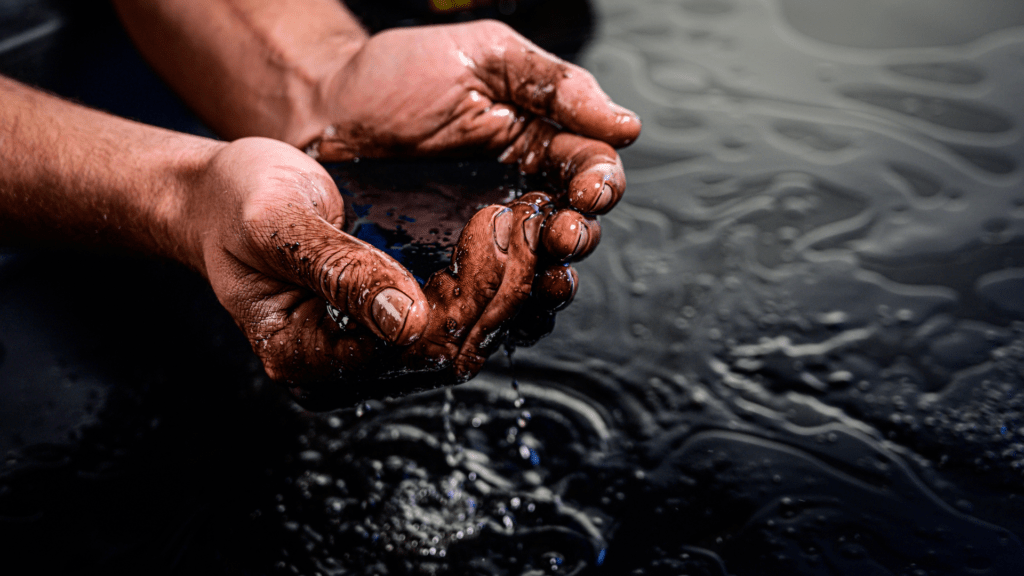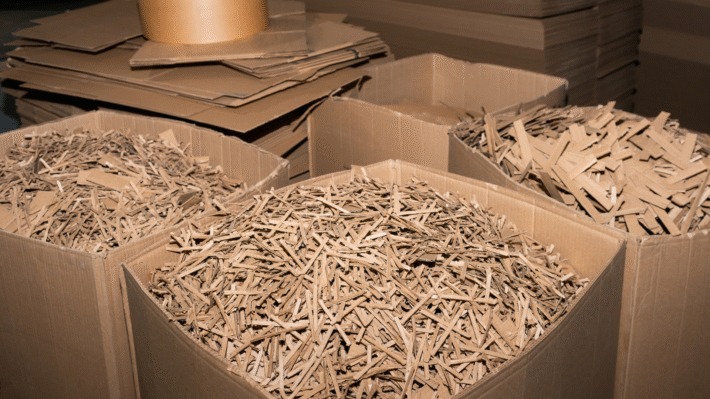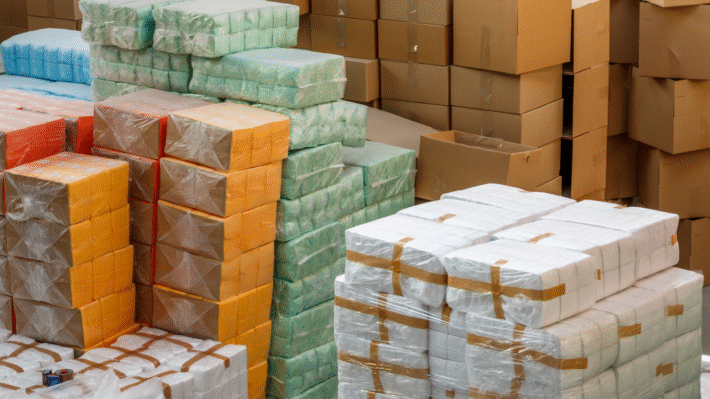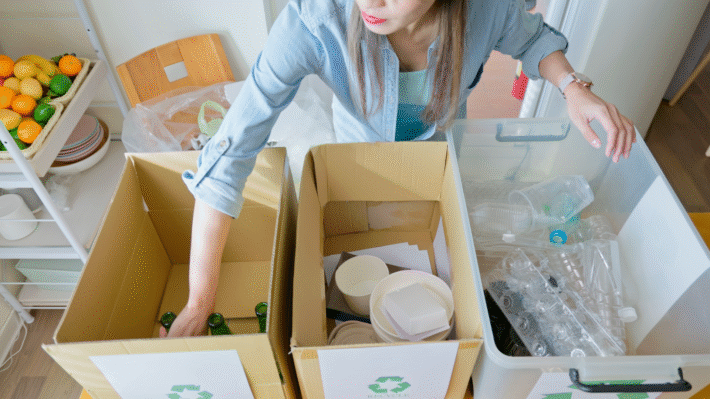Creating Circularity in Oil Spill Cleanup and Giving Waste Materials New Life

Hey there bright minds! Feel the excitement in the air? We’re diving deep today into an unexpectedly exhilarating world – the oil spill cleanup waste supply chain. As odd as it may seem, this realm of sorbents and contaminated materials is ripe for revolution! There’s a pesky oil spill on one hand and an immense opportunity on the other. An opportunity to turn waste into wealth and catastrophe into sustainability. Imagine trading linear for circular, waste for reusable resources. It’s not just a possibility, it’s the future. So, whether you’re an eco-warrior, a genius inventor, or just plain curious, buckle up! We’re on the brink of transforming a conventional problem into an innovative journey. Awaken your inner Gary Halbert, let’s conjure some magic from the ‘not so ordinary.’ It’s time to explore the uncharted terrains of the Circular Economy in Oil Spill Cleanup. We can’t wait to share this rollercoaster ride with you! Are you ready?
Understanding Oil Spill Waste and Its Impact
When an oil spill occurs, it spells trouble not only for the environment but also for our waste management systems. Allow me to zoom in.
What Happens After an Oil Spill?
The Environmental Damage
Let’s start with the immediate impact. Oil spills hammer the environment with a one-two punch. Plants and animals coated in oil suffer almost immediately. They can’t breathe or photosynthesize. The oil blocks sunlight, suffocating life beneath the water’s surface. The environmental damage is both heartbreaking and far-reaching.
Oil spills are nasty business. They choke off oxygen supply, suffocate marine life, and disrupt fragile ecosystems. But as if this disaster movie isn’t horrifying enough, there’s a chilling sequel: colossal waste generation.
The Problem with Waste
Cleaning up an oil spill is no small feat. It involves a legion of workers, an array of sorbents, and a flotilla of booms. These materials absorb and contain the oil, but in doing so, they become saturated with this contaminant, turning them into hazardous waste.
And that’s where the plot thickens. Oil-soaked rags, used sorbents, slurp of oil-sludge – we’re left with a mountain of waste to deal with. Some might say, “Well, can’t we just dispose of them?” Yes, we technically can. But the methods – incineration and landfilling – are far from ideal. Both have serious environmental drawbacks, and neither aligns with sustainable principles.
So, how can we better manage oil spill cleanup waste? Stick around. We’ll dive into that in the upcoming sections. But spoiler alert: It involves creating circularity in the oil spill cleanup waste supply chain.
Circular Economy in Oil Spill Cleanup
Let’s take a journey, my friend. Picture a colossal oil spill occurring at sea. It’s gruesome, right?
Well, my friend, it’s time we changed tactics from the familiar ‘use and dispose’ to something a lot more sensible. Read on.
From Waste to Resources
Ever heard of the saying, “another man’s trash could be another man’s treasure?” Well, that’s the mantra in breaking the mind-numbing, troublesome linear approach to oil spill cleanups.
Breaking the Linear Approach
First, let me give you the 411 on the conventional linear approach. That’s the “take–make–dispose” model. So, it’s pretty much like this—a spill happens, we clean up the mess (using sorbents and skimmers, remember?), and then we throw away whatever we’ve used in the cleanup. And what happens after that? It’s a big fat ZERO utility. A waste. You can say it’s like using a tissue paper.
But here’s the kicker—what if, just what if, we could take that used ’tissue paper’ and instead of chucking it in the bin, we could miraculously transform it into something of value once more? Sounds intriguing, right? Friends, this is where we move on from the linear approach to the embrace the circular methods.
Embracing Circular Methods
So here’s the deal – circular methods champion three keystone principles: reduce, reuse, and recycle. Simple, right?
But wait, there’s more to it.
Imagine a world where, instead of discarding the used sorbents and skimmers after an oil cleanup, we could somehow rejuvenate these materials? We sift through the waste, reprocess it, and voila! It’s a treasure chest of resources!
We’re talking transforming the materials into energy through waste-to-energy techniques (yes, that’s possible too!) or back into sorbents again through advanced and, get this, environmentally-benign processes!
Adopting a circular methodology in digesting oil spill waste can turn that daunting environmental nightmare into a potential stream of usable end-products. It gives these waste materials a new lease on life.
By embracing circular methods, we’re not just making a sustainable and smart choice for our economy—we’re also creating a “win-win” approach for our precious Mother Earth.
Stay wise, my friend. Until next time, as we delve more into the world of circular economy in oil spill cleanups.
Types of Sorbents and Contaminated Materials
In the world of oil spill cleanup, sorbents play a critical role. They are the mop-up crew, the first line of defense, and sometimes the last resort in the face of an unfortunate oil spill. But not all sorbents are created equal. Let’s roll up our sleeves and delve into the nuanced universe of different kinds of sorbents.
Different Kinds of Sorbents
We’ve got a variety of sorbents working on the frontline of cleanup operations. From materials gifted by mother nature herself to artifically concocted substances, each type of sorbent has its own strengths and weaknesses.
Natural Sorbents
Life has a funny way of providing solutions to problems. With natural sorbents, we are borrowing from nature’s playbook to fight oil spills. Hay, straw, peat moss, and even hair and feathers can be used to clean up oil spills. Yes, you did read that right! Hair and feathers! They work because they’re both porous and hydrophobic – they let oil in but not water. These quirky cleanup tools provide a cost-effective and environmentally friendly option for handling oil spills. But they also have their share of problems, like disposing of them once they’re laden with oil or how ineffective they can be in windy or rough water situations.
Synthetic Sorbents
Tirelessly working alongside their natural counterparts are the synthetic sorbents. Made from man-made materials like polyurethane, polyethylene, and polypropylene, these sorbents pull an extra shift when it comes to oil spill cleanup. They are more effective at absorbing oil, and being light, they can float on the surface for easy collection. However, their synthetic nature poses challenges for disposal and they could also be more costly.
Moving from sorbents, let’s take a look at the not-so-pretty side of oil spill cleanup efforts – the contaminated materials.
Handling Contaminated Materials
Just as we can’t make an omelet without breaking eggs, we can’t clean up an oil spill without generating waste. Let’s meet the usual suspects – oil rags and booms, and sludge.
Challenges with Oil Rags and Booms
After a hard day’s job of sopping up oil, oil rags and booms transform from heroes to villains. Laden with oil, they become hazardous waste that needs to be disposed of properly. Ignoring them could lead to contamination of the environment and even health hazards for humans and wildlife. If not managed properly, these contaminated materials may end up in landfills or incinerators, contributing to another environmental problem.
Dealing with Sludge
Ever heard of the term ‘sludge’? Sounds nasty, doesn’t it? Sludge is exactly what you’re imagining – a gooey, grimy mix of solids and liquids. In oil spill cleanup, it’s a combination of oil, water, and any other debris present. Disposing of this foul mix is a challenge because it’s tough to separate the components, and what’s more, we’re often left with a residue that’s hazardous. Again, poor disposal of sludge can lead to serious environmental contamination.
So there you have it. We’ve journeyed through the types of sorbents used in oil spill cleanups and veered into the messy world of contaminated materials. Both important factors in grappling with the aftermath of oil spills, and crucial components of the cleanup waste supply chain. As we continue to combat oil spills, we need efficient and sustainable ways to manage these materials, to turn the cleanup process truly circular.
Strategies for Circularity
When it comes to handling oil spill waste, we’ve got to break out of the old, linear ways. Instead, imagine cutting-edge strategies that spin the entire waste process into a virtuous cycle. Here’s how it works:
Reducing Waste with New Sorbents
Ever thought about how much waste could be saved if we used the right materials? Well, it’s possible with reusable and biodegradable sorbents.
Here’s the scoop…
Most sorbents used in oil spill cleanups are one-time-use only. Imagine throwing away a mop after using it just once, seems wasteful, right? But, utilizing reusable sorbents can highly decrease waste volume. These sorbents are designed to absorb oil, can then be cleaned, and put back to work again for more spills.
On the other hand, biodegradable sorbents are made from natural materials like straw, wool, or cellulose, and would decompose naturally over time, leaving far less waste to worry about.
Recycling Oil Spill Materials
Recycling isn’t just for plastic bottles or paper anymore. When applied to oil spill waste management, it changes the game entirely. Think along the lines of mechanical, chemical, and biological approaches.
Mechanical recycling involves separating oil from the sorbent by squeezing, heating, or rinsing it and then reusing the collected oil and possibly the sorbent. Chemical processes, on the other hand, use solvents or reactions to get the job done.
On the more innovative side, there’s biological treatment. It uses mighty microorganisms that have an insatiable appetite for oil. They naturally degrade the oil, turning it into harmless substances.
Repurposing into New Products
Out of the blackened, oily mess, new products emerge like a phoenix. By using pyrolysis and upcycling, oil spill waste can get a new lease on life. Pyrolysis, a fancy word for heating in the absence of oxygen, can transform waste into a spectrum of useful products like bio-oil or syngas.
In a similar vein, upcycling takes waste materials and makes them into higher-value products. Imagine turning used oil booms into construction materials, isn’t that neat?
Moreover, creating biochar from waste has a two-fold benefit. Biochar is like a superhero of soil – it improves soil health, promoting plant growth, and oh, it captures carbon as well, helping to combat climate change.
So, folks, there you have some of the latest strategies in circularity for oil spill cleanup. It’s all about rethinking and redefining ‘waste.’ And here’s a secret. Sustainability and cost-effectiveness? They can go hand-in-hand when we opt for circularity.
Advancing Technologies for Cleanup
The grunt work involved in oil spill cleanup and waste management can be streamlined with the use of technology. Especially when it comes to repurposing and reusing oil spill waste, advanced technology plays a pivotal role.
Innovative Sorbents and Nanomaterials
Enter the world of innovative sorbents and nanomaterials. These little game-changers add a lot of punch to our cleanup efforts. Sorbents, those handy materials that soak up the oil, are constantly being upgraded with new technology. We’ve got the natural ones like peat moss and straw, which are cheap and eco-friendly but can be a bit slow. Then there are the synthetic ones, fast and efficient but not always the greenest game in town.
However, the real stars are blend of technology and innovation combined to make advanced synthetic sorbents. These babies are not only super-efficient but also quicker and more eco-friendly thanks to breakthroughs in the technology used to create them. The debate isn’t over yet, but these advanced sorbents are showing a lot of promise.
And let’s not forget the nanomaterials, the micromanagers of the cleanup process. New, ultra-thin materials are being developed that can not only absorb oil but also resist water, making them perfect for dealing with oil spills.
Using AI and Smart Solutions
Then there’s AI and Smart Solutions, where the computers step in to lend a hand. Real-time monitoring techniques means we can track a spill from the moment it happens, getting a handle on its size, scope, and spread. What was once a guessing game can now be managed with efficiency and precision.
AI isn’t just for monitoring, though. AI deployment can take over tedious tasks, minimizing human error, and boosting overall efficiency. AI can also make sense of vast amounts of data, helping us to understand patterns and predict future spills before they happen.
Don’t ignore the power of green logistics. Efficient collection and transport of waste can reduce overall costs and limit the waste’s environmental footprint. After all, what’s the point of cleaning up an oil spill if we’re just going to make a mess while disposing of the waste?
That’s the beauty of technology – it brings a whole new level of possibilities to the oil spill cleanup process. It’s an exciting area with a powerhouse of next-level solutions in the pipeline. Technology may well be our best weapon in the fight against oil spill waste.
Policy and Industry Involvement
Friends, the cleanup and circularity of oil spill waste isn’t just about fancy technologies or innovative methods. Yes, they play a crucial role, but another piece of the puzzle is the policy and industry’s involvement.
Understanding Regulations
Ringing any bells? Well, if we take a closer look, we’ll see that the world’s already got a few rules and regulations up its sleeve. One such standard at the global level is the MARPOL.
Global Standards like MARPOL
Confused with all the jargon? Fear not, I’m here to make it easier for you. MARPOL stands for International Convention for the Prevention of Pollution from Ships. As complicated as it may sound initially, its task is as simple as its goal – prevent sea pollution. It’s like an international agreement between countries on how to handle sea spills. It’s the “clean up after your mess” principle but on a global level.
Incentives for Circular Economy
Alright, now we’ve got ourselves familiar with the law. But we know that everything comes down to incentives. And the oil spill cleanup realm is no different.
Carbon Credits and Partnerships
Ever heard of carbon credits? Well, imagine this: you’re a company involved in the cleanup process. You’re going all out, investing in reusable sorbents, fancy tech, you name it. And for all your efforts, you get a gold star or in this case, a carbon credit. These are like brownie points that you can trade or sell.
And don’t even get me started on partnerships. Imagine the wonders of joining hands with public entities! Take one part government support, add in a dash of private sector innovation, and voila! You’ve got yourself a recipe for an efficient and circular oil spill cleanup process.
Now that we’ve broken down the complexities, it’s evident how following regulations and creating incentives could significantly enhance the circularity in the oil spill cleanup waste supply chain. Chew on that for a bit as we continue our adventure into the world of oil spill cleanup and waste circularity.
Challenges and Future Insights
When it comes to creating circularity in oil spill cleanup waste supply chains, two elephants must be addressed: technological and financial barriers. Here’s the scoop.
Facing Technological and Financial Barriers
On one hand, we can look at the advancements in technology as a solution. Unfortunately, what glitters is not always gold. Behind the promising technological applications lies a complex ecosystem of innovation, funding, and industry acceptance. Advances in sorbent technology, for example, may require a considerable investment in the research, development, and testing stages before they can be widely adopted. Remember, most technological innovations come with hefty price tags and often, regulatory hurdles.
If that wasn’t enough, securing adequate financial resources to support the transition towards circular strategies can be a tall order. Traditional cleanup methods, although less sustainable, are often cheaper in the short term. This makes the financial justification for greener strategies a bit of a conundrum for businesses who must fend off the looming shadow of the bottom line.
But don’t lose hope just yet. As with every storm, there’s always a rainbow waiting at the other end.
Envisioning a Sustainable Future
Scaling Innovations
Here’s the exciting part. Despite the challenges, there are growing opportunities for scaling innovations in the circular economy in oil spill cleanup. The future holds the promise for reusable and biodegradable sorbents that can be cleaned, recycled, and reused, reducing waste generation drastically and delivering significant cost savings.
The dream of every environmental warrior is to witness the scale-up of these eco-friendly practices, and the good news is this dream is slowly turning into reality! The sweet taste of victory becomes even more delightful when financial savings follow eco-friendly practices.
Integrating AI and IoT
Did you know that with the help of artificial intelligence (AI) and the Internet of Things (IoT), we can make more informed, agile, and accurate decisions? These advanced technologies allow for real-time data collection, processing, and analysis, resulting in more efficient operations and – you guessed it – less waste!
Drumroll, please – The integration of AI and IoT heralds a new era in oil spill cleanup. One where cleanup operations become smoother, faster, and a lot greener. In a world that’s fit to burst with data, these technological wonders pull off the cape and become the superheroes we need.
Resisting change is as futile as trying to stop the tide – impossible and a waste of time! With these advancements, we can see the horizon of a more sustainable world come into view. The path is fraught with challenges, but our vision holds the promise of a cleaner, greener future.



